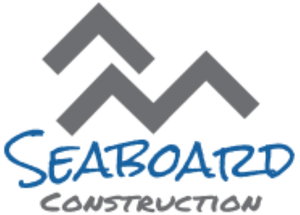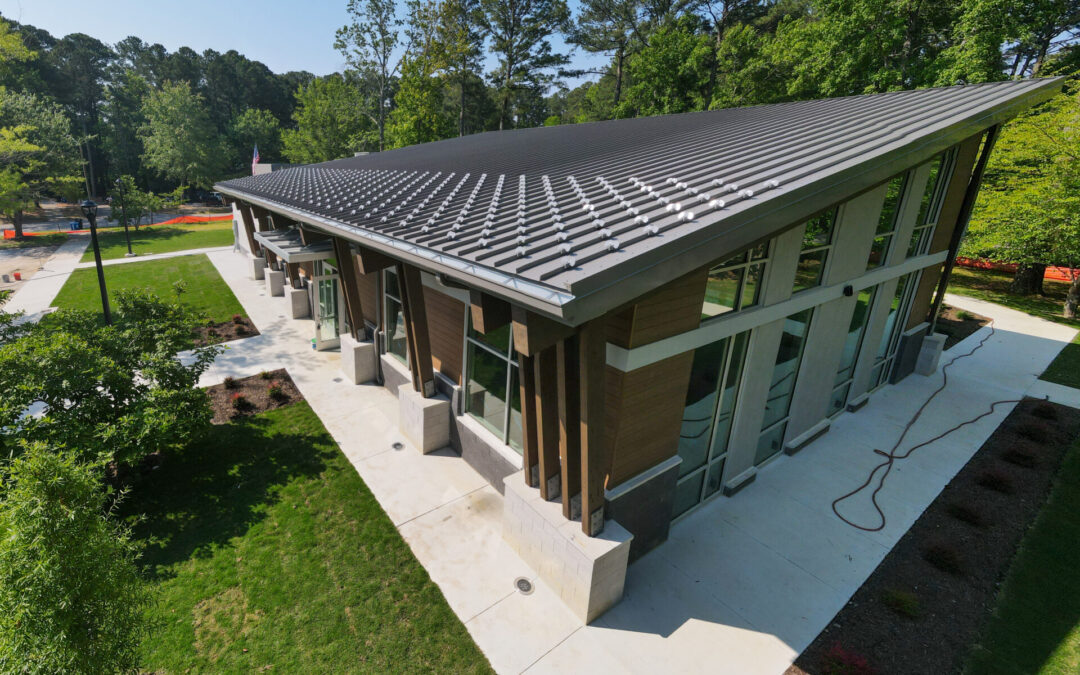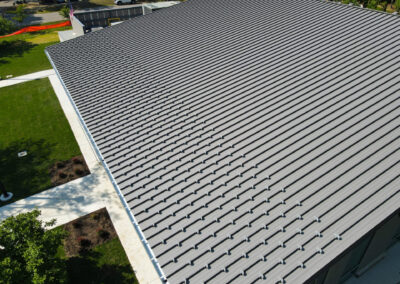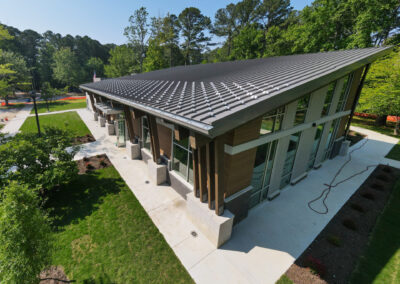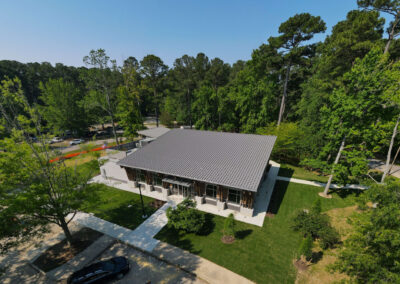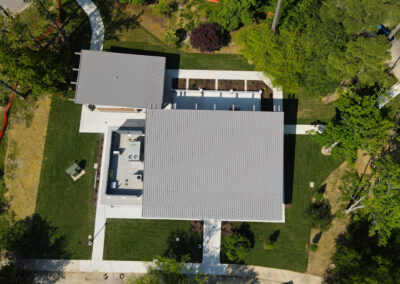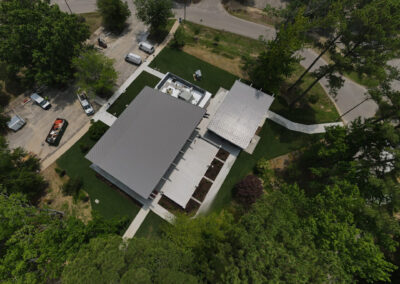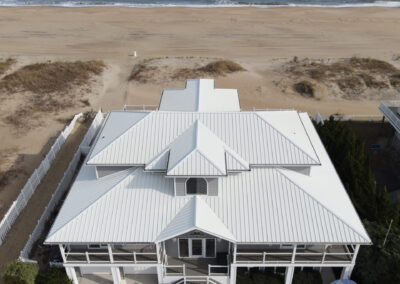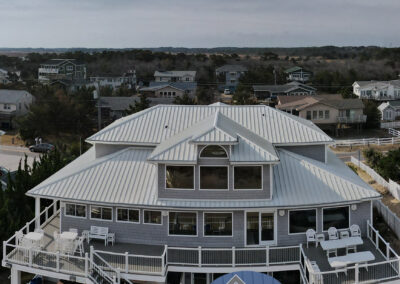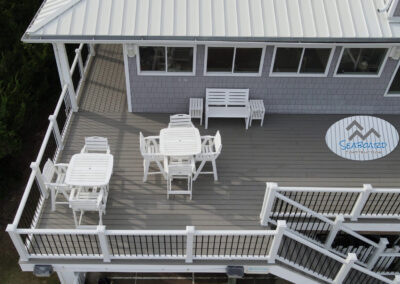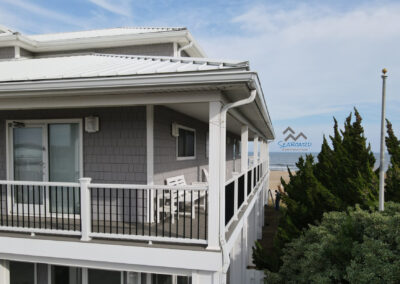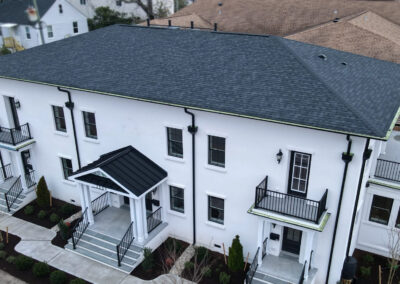Virginia Metal Roofers
Hampton Roads Metal Roofers
Call now 757-210-6580
Choose Seaboard Construction for the Best Standing Seam Metal Roofing in Hampton Roads
When it comes to top-quality standing seam metal roofing in Hampton Roads, Seaboard Construction is the premier choice. With our commitment to customer satisfaction and craftsmanship, we stand out from other metal roofing companies in Norfolk, Chesapeake, Virginia Beach, Newport News, and beyond.
What sets us apart? We take pride in our in-house fabrication and forming of metal roofing panels. This allows us to maintain control over the process, ensuring the highest level of precision and excellence in every panel. Our experienced team pays meticulous attention to detail, guaranteeing installations that meet the highest standards.
As a local metal roofing company, we understand the specific needs and challenges of the Hampton Roads area. Our professionalism, reliability, and exceptional customer service have earned us a strong reputation. When you choose Seaboard Construction, you can trust that your standing seam metal roof will be installed with care and expertise.
To further prioritize your satisfaction, we offer a comprehensive 2-year craftsmanship warranty on all installed standing seam metal roofs. This warranty gives you peace of mind, knowing that any defects or issues arising from our workmanship will be promptly addressed.
Ready to experience the excellence and customer satisfaction that sets Seaboard Construction apart? Contact us today to discuss your project and discover how we can meet your metal roofing needs in Hampton Roads.
Reach out to our team of metal roofing contractors today for a free roof inspection!
Seaboard Construction is a Class A Certificated contractor specializeing in commercial and residential roofing solutions in Hampton Roads.
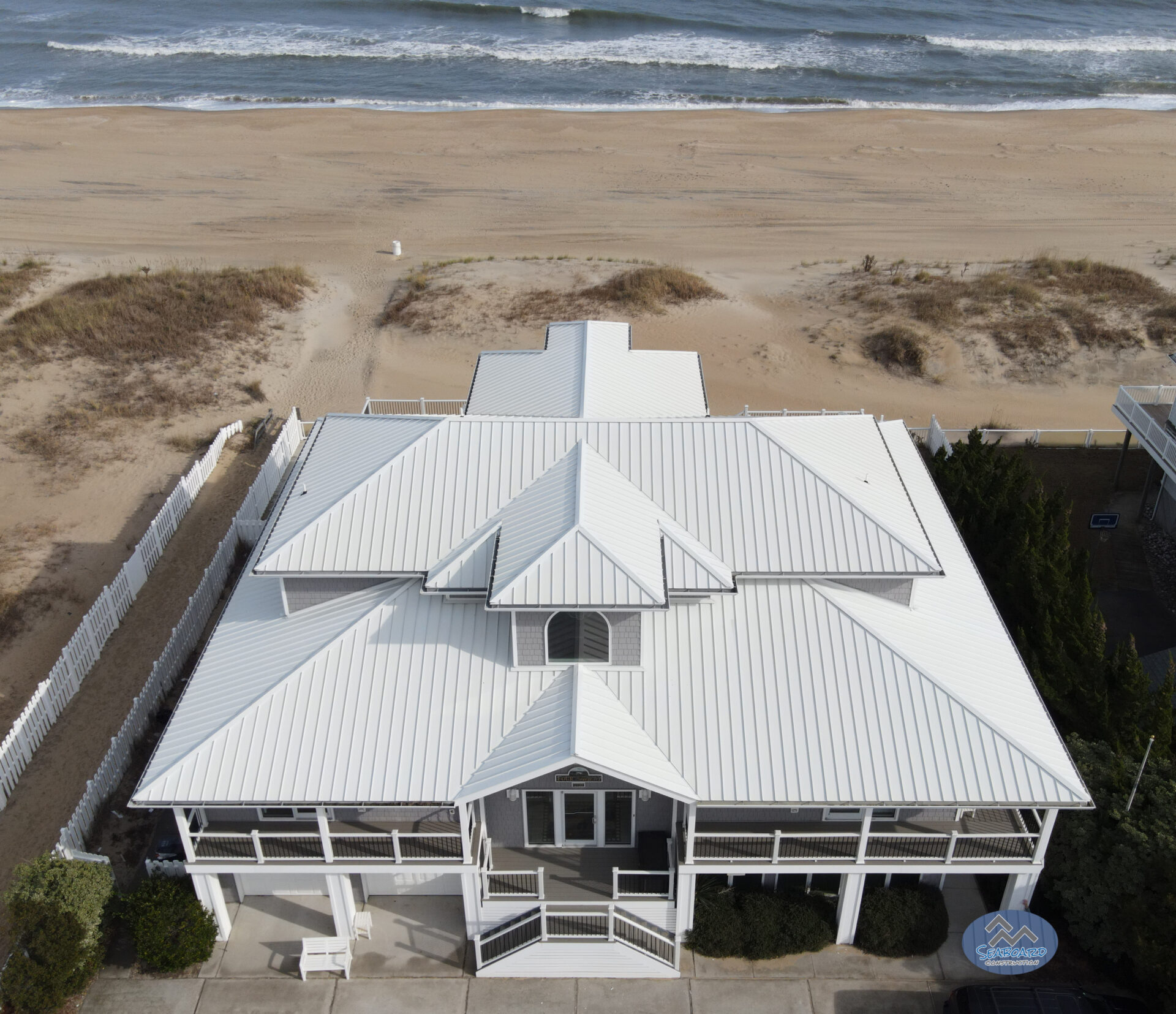
Standing Seam Metal Roof Gallery
Call 757-210-6580
Top 5 Reasons Metal Roofs Leak (How to Prevent Leaks!)
In this article we’ll review the top reasons metal roofs leak:
- Importance of a leak-free metal roof for home protection and longevity.
- Overview of metal roofs and their reputation for durability.
- Top 5 reasons metal roofs may leak: improper installation and flashing, insufficient roof slope, roof penetrations, expansion and contraction, and aging and maintenance neglect.
- Practical tips to prevent leaks in metal roofs, including hiring professional installers, proper flashing and sealing, considering roof slope and drainage, sealing roof penetrations, and conducting regular inspections and maintenance.
- Comparing metal roofs to other roofing materials like asphalt shingles, wood shakes, and clay tiles.
- Addressing the question: Do standing seam metal roofs leak? Emphasizing the durability and minimal risk of leaks with proper installation and maintenance.
Top 5 Reasons Metal Roofs Leak (How to Prevent It!)
Importance of a leak-free roof for the protection of the home:
A leak-free roof is crucial for safeguarding a home from water damage and ensuring the longevity of its structure. Water infiltration can lead to costly repairs, structural deterioration, and the growth of mold and mildew, posing health risks to occupants. Therefore, maintaining a watertight roof is essential to preserve the integrity and value of a home. While metal roofs are generally known for their durability and resistance to weather elements, it is important to understand the potential causes of leaks and take preventive measures to avoid any potential issues. In this blog post, we will delve into the top reasons why metal roofs may develop leaks and provide practical tips on how to prevent them, addressing the common question of whether standing seam metal roofs leak.
Overview of metal roofs and their reputation for durability:
Metal roofs have gained popularity due to their reputation for durability and long lifespan. These roofs are known to withstand harsh weather conditions, including strong winds, heavy rain, and snow. They offer superior resistance to impact, fire, and pests. Metal roofs are also low-maintenance, requiring minimal repairs and replacements over their lifespan. However, despite their many benefits, there is a possibility of leaks in metal roofs if certain factors are not properly addressed. Understanding the potential reasons for leaks and taking proactive steps to prevent them is crucial to ensure the continued reliability and effectiveness of metal roofs. In the following sections, we will explore the top five reasons why metal roofs may leak and provide practical solutions to mitigate these issues and maintain a leak-free roof.
We’ll cover the top reasons why metal roofs may leak and how to prevent them:”Do standing seam metal roofs leak?”
Metal roofs, including standing seam metal roofs, are generally known for their durability and resistance to leaks. However, it is important to address common factors that can contribute to potential leaks and take preventive measures to maintain a watertight roof. In this blog post, we will delve into the top reasons why metal roofs may develop leaks and provide practical tips on how to prevent them. By understanding these potential issues and implementing preventive strategies, homeowners can ensure the long-term performance and reliability of their metal roofs, including standing seam metal roofs. Whether it’s addressing flashing details, maintaining proper sealant integrity, or conducting regular inspections, we will explore key steps to prevent leaks and answer the question: “Do standing seam metal roofs leak?”
Understanding Metal Roofs and Their Advantages
Characteristics of metal roofs:
Metal roofs are roofing systems constructed using various metal materials such as aluminum, steel, or copper. They consist of large metal panels or sheets that are securely fastened together with raised seams or interlocking mechanisms, forming a watertight barrier against the elements. Metal roofs are renowned for their exceptional strength, durability, and resistance to weathering. They are designed to withstand harsh weather conditions, including heavy rain, snow, strong winds, and even hail. Additionally, metal roofs are lightweight compared to other roofing materials, which puts less strain on the structure of the building.
Advantages of metal roofs over other roofing materials:
Exceptional durability and longevity:
Metal roofs have a reputation for their exceptional durability and long lifespan. When properly installed and maintained, they can last 40 to 70 years or even more. Metal roofs are highly resistant to rot, decay, and insect damage, ensuring that they remain structurally sound and intact for many decades. This longevity translates to significant cost savings over time, as homeowners can avoid the need for frequent roof replacements or extensive repairs.
Energy efficiency and cost savings:
Metal roofs offer excellent energy efficiency, which can lead to substantial cost savings over the lifespan of the roof. The reflective properties of metal roofing materials help to reduce heat absorption from the sun, keeping the interior of the building cooler and reducing the reliance on air conditioning systems. This energy efficiency can result in lower utility bills, particularly during hot summer months. Additionally, metal roofs are recyclable, making them an environmentally-friendly choice that aligns with sustainable practices.
Aesthetic appeal and design versatility:
Metal roofs come in a wide range of styles, colors, and finishes, allowing homeowners to achieve the desired aesthetic for their property. Whether it’s a modern, sleek appearance or a more traditional and rustic charm, metal roofs can be customized to complement various architectural styles. The versatility of metal roofs extends to their ability to be shaped and formed into different profiles, including standing seam, corrugated, or shingle-like panels. This design flexibility allows homeowners to choose a metal roof that suits their preferences and enhances the overall curb appeal of their property.
Top 5 Reasons Metal Roofs May Leak
Improper installation and flashing:
Improper installation practices and inadequate flashing are common causes of leaks in metal roofs. During installation, if panels are not properly aligned, fastened, or sealed, it can create gaps or areas vulnerable to water penetration. Similarly, flashing, which is used to protect roof joints, transitions, and penetrations, must be installed correctly to ensure a watertight seal. Failure to follow proper installation techniques and flashing procedures can lead to water infiltration over time, resulting in leaks. It is essential to hire experienced and qualified roofing professionals who understand the intricacies of metal roof installation and flashing details to avoid such issues.
Insufficient roof slope or pitch:
The slope or pitch of a roof plays a vital role in ensuring proper water drainage. Insufficient slope on a metal roof can impede the effective runoff of water, leading to ponding or pooling. Over time, standing water can seep through the roof’s seams or find its way into vulnerable areas, causing leaks. We recommend to use metal on slopes less than 3/12 because they shed water much better than shingles, but once you get a slope of approximately 1/12 to “flat”, you should always have a membrane like TPO installed.
Roof penetrations and protrusions:
Roof penetrations and protrusions, such as chimneys, vents, skylights, or HVAC units, are potential areas of vulnerability for leaks in metal roofs. Improperly sealed or maintained penetrations can allow water to infiltrate the roof system and compromise its integrity. It is important to employ proper flashing techniques and sealants to create a watertight barrier around these areas. Regular inspection and maintenance of roof penetrations are essential to identify any signs of deterioration or damage and promptly address them to prevent leaks.
Expansion and contraction:
Metal roofs are subject to expansion and contraction due to temperature fluctuations. When exposed to high temperatures, metal panels expand, and during colder periods, they contract. This constant movement can place stress on the roof system, potentially leading to gaps, loose fasteners, or compromised sealants, which can result in leaks. To mitigate the effects of expansion and contraction, proper design considerations and installation techniques are crucial. Using appropriate fastening systems that allow for movement, utilizing expansion joints, and selecting compatible sealants and coatings can help maintain the integrity of the metal roof and prevent leaks caused by thermal changes.
Aging and maintenance neglect:
Over time, the natural aging process and lack of proper maintenance can contribute to the development of leaks in metal roofs. Exposure to the elements, including UV radiation, rain, snow, and debris, can gradually degrade the roof’s materials and protective coatings, making it more susceptible to leaks. Regular inspections and maintenance practices, such as cleaning debris, addressing surface damages promptly, and resealing or recoating as needed, are crucial to prevent leaks. Proactive maintenance helps identify potential issues before they escalate and ensures the ongoing performance and water-tightness of the metal roof.
Call now 757-210-6580
Metal Roofers in Virginia
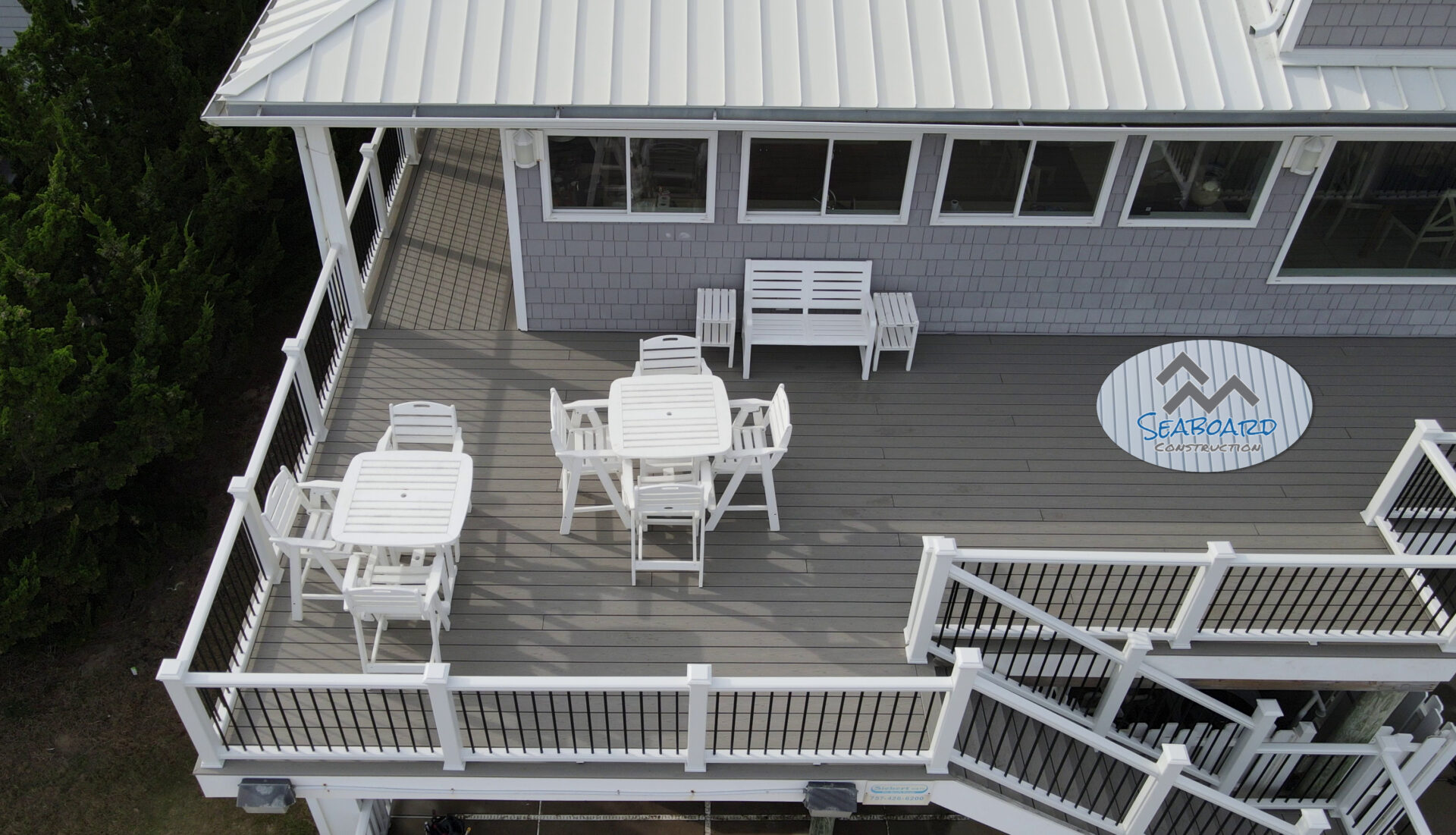
Virginia Beach Metal Roofing Company
How to Prevent Leaks in Metal Roofs
Hiring a professional and experienced metal roof installer:
To ensure a leak-free metal roof, it is crucial to hire a professional and experienced roofing contractor like Seaboard Construction who specializes in metal roof installation. Proper installation techniques are essential for creating a watertight seal and preventing future leaks. A reputable contractor will have the knowledge, expertise, and necessary equipment to install the metal roof correctly. They will follow industry best practices, including aligning and fastening panels properly, ensuring tight seams, and using appropriate sealants and flashing techniques. By choosing a trusted and skilled installer, homeowners can have confidence in the quality and longevity of their metal roof.
Ensuring proper flashing and sealing:
Flashing and sealing are critical components of a leak-free metal roof system. During installation, detailed attention should be given to the flashing components, including valleys, transitions, roof-to-wall connections, and roof penetrations. These areas are prone to water infiltration if not properly sealed. A thorough examination and proper installation of flashing materials, such as metal flashing or rubberized membranes, are crucial to creating a reliable barrier against water penetration. Additionally, appropriate use of high-quality sealants and adhesives, specifically designed for metal roofs, helps ensure tight seals and prevent leaks. Proper sealing of seams, fasteners, and joints, as well as around roof penetrations, is vital for maintaining the integrity of the metal roof.
Design considerations for roof slope and drainage:
To prevent water pooling and potential leaks, proper roof slope and drainage design are essential. Understanding the optimal pitch or slope for effective water runoff is crucial during the planning and design stage. A slope of at least 2:12 is generally recommended for metal roofs to ensure efficient drainage. Installing appropriate drainage systems, such as gutters and downspouts, helps divert water away from the roof and foundation. These systems should be properly sized and regularly maintained to prevent clogs or blockages that can lead to water backup and potential leaks. By considering roof slope and implementing effective drainage solutions, homeowners can minimize the risk of water infiltration and maintain a leak-free metal roof.
Proper sealing of roof penetrations and protrusions:
Roof penetrations and protrusions, such as pipes, vents, chimneys, and skylights, are vulnerable areas for potential leaks in a metal roof. Properly sealing these areas is crucial to prevent water intrusion. Various techniques can be employed, including using rubber gaskets, metal flashing, or specialized boot-like seals designed for specific penetrations. Each penetration or protrusion should be carefully inspected and sealed to ensure a watertight connection with the metal roof panels. Regular inspection and maintenance of these seals are essential to identify any signs of deterioration or damage and promptly address them to prevent leaks.
Regular inspections and maintenance:
Regular inspections and proactive maintenance play a vital role in preventing leaks and ensuring the long-term performance of a metal roof. Homeowners should conduct visual inspections, ideally twice a year, to identify any signs of damage, loose fasteners, or deteriorated sealants. Early detection allows for timely repairs, preventing potential leaks from developing. Additionally, routine maintenance practices, such as clearing debris from the roof surface, ensuring proper ventilation, and checking for any signs of wear or corrosion, should be carried out. Regular maintenance helps preserve the integrity of the metal roof and allows homeowners to address potential issues before they escalate into costly leaks.
Comparing Metal Roofs to Other Roofing Materials
Asphalt shingles vs. metal roofs:
Vulnerabilities and common causes of leaks:
Asphalt shingles, while widely used, can be susceptible to leaks due to various factors. Over time, shingles may deteriorate, become cracked, or lose their granules, compromising their ability to effectively shed water. Exposure to extreme weather conditions, such as high winds or heavy rain, can also lead to shingle damage and subsequent leaks. Additionally, improper installation practices, including inadequate flashing or poor ventilation, can contribute to water infiltration. Understanding the vulnerabilities and common causes of leaks in asphalt shingles is crucial for homeowners to address these issues proactively.
Comparing maintenance requirements with metal roofs:
In comparison to metal roofs, asphalt shingles generally require more regular maintenance to prevent leaks. Homeowners with asphalt shingle roofs should perform routine inspections to identify any damaged or missing shingles, as well as address potential issues with flashing or ventilation. Regular cleaning of debris, such as leaves or moss, is necessary to maintain the integrity of the shingles and prevent water retention. Additionally, periodic resealing or reapplication of protective coatings may be necessary to enhance the shingles’ water resistance. Comparatively, metal roofs have lower maintenance requirements, reducing the risk of potential leaks and the need for frequent inspections or repairs.
Wood shakes and shingles:
Factors contributing to leaks in wood roofs:
Wood shakes and shingles can develop leaks due to several factors. Over time, wood can naturally decay or rot, particularly if not properly maintained or if exposed to excessive moisture. Inadequate ventilation or poor attic insulation can lead to condensation buildup, which can accelerate wood deterioration and potentially cause leaks. Additionally, wood roofs are susceptible to damage from pests, such as insects or rodents, which can compromise the roof’s integrity and allow water infiltration. Understanding these factors is essential for homeowners considering wood roofs and for implementing proper maintenance practices to prevent leaks.
Durability and longevity compared to metal roofs:
In terms of durability and longevity, wood shakes and shingles have a shorter lifespan compared to metal roofs. While they offer a unique and natural aesthetic appeal, wood roofs generally require more frequent maintenance and replacement. Over time, the wood can become brittle, split, or warp, making it more susceptible to leaks. In contrast, metal roofs, including standing seam metal roofs, have exceptional durability and can last significantly longer with proper installation and maintenance. Metal roofs offer superior resistance to rot, decay, and pest damage, minimizing the risk of leaks and providing homeowners with a longer-lasting roofing solution.
Concrete and clay tiles:
Potential leak issues with tile roofs:
While concrete and clay tiles are known for their durability and longevity, they can develop leaks under certain circumstances. One common cause of leaks in tile roofs is damage or displacement of individual tiles, typically due to severe weather events or impact. Improper installation practices, such as inadequate underlayment or insufficient flashing, can also contribute to water infiltration. Additionally, accumulation of debris or moss between the tiles can obstruct water drainage, leading to leaks. Understanding these potential issues with tile roofs is crucial for homeowners to address any vulnerabilities and ensure a leak-free roofing system.
Comparing maintenance needs with metal roof maintenance:
Compared to metal roofs, concrete and clay tile roofs typically require more extensive maintenance to prevent leaks. Regular inspections are necessary to identify and replace any damaged or displaced tiles. Cleaning of debris, such as leaves or moss, should be performed to maintain proper drainage and prevent water buildup. Properly sealing the edges and seams of the tiles and ensuring adequate flashing around roof penetrations are essential to prevent leaks. Metal roofs, on the other hand, have lower maintenance requirements and are less prone to leaks. Their durable nature and resistance to weathering reduce the need for frequent inspections and repairs, providing homeowners with peace of mind and long-term protection against leaks.
Answering the Question: Do Standing Seam Metal Roofs Leak?
Factors that can lead to leaks in metal roofs:
While metal roofs are known for their durability and resistance to leaks, it is important to acknowledge the factors that can contribute to leaks in these roofing systems. Some of the key factors include improper installation practices, such as incorrect fastening or inadequate sealing of seams and flashing. Additionally, insufficient roof slope or pitch can impede water drainage and potentially result in leaks. Roof penetrations, such as chimneys or vents, if not properly sealed, can also become vulnerable areas for water infiltration. By reiterating these factors, homeowners gain a better understanding of the potential causes of leaks in metal roofs and the importance of addressing them proactively.
The importance of proper installation and maintenance:
Proper installation and regular maintenance are crucial for preventing leaks in standing seam metal roofs. The expertise and experience of professional installers play a significant role in ensuring a watertight seal and proper functioning of the roof system. Hiring a reputable and knowledgeable roofing contractor who specializes in metal roofs is essential to minimize the risk of leaks due to installation errors. Additionally, regular maintenance practices, such as visual inspections and prompt repairs, are necessary to identify and address any potential issues before they escalate into leaks. By emphasizing the importance of professional installation and ongoing maintenance, homeowners can feel confident in the leak-resistant qualities of standing seam metal roofs.
The durability of standing seam metal roofs:
There may be misconceptions or concerns among homeowners regarding the potential for leaks in standing seam metal roofs. However, it is crucial to provide reassurance about the durability and leak-resistant nature of these roofing systems. Standing seam metal roofs are specifically designed to minimize the risk of leaks by utilizing concealed fasteners and raised seams that enhance water shedding capabilities. The interlocking panels and durable metal materials create a tight seal that helps prevent water infiltration. By addressing any misconceptions or doubts and highlighting the proven track record of standing seam metal roofs in providing long-term leak protection, homeowners can make informed decisions and have peace of mind regarding the reliability of their roofing investment.
It’s a Wrap: Standing Seam Metal Roofs are Durable
The top reasons metal roofs may leak and prevention measures:
In conclusion, it is important to be aware of the potential reasons why metal roofs may develop leaks and take preventive measures to ensure their long-term performance. Improper installation and flashing, insufficient roof slope or pitch, roof penetrations, expansion and contraction, and aging and maintenance neglect are key factors that can contribute to leaks in metal roofs. However, by hiring professional installers, ensuring proper flashing and sealing, considering roof slope and drainage, properly sealing roof penetrations, and conducting regular inspections and maintenance, homeowners can significantly reduce the risk of leaks in their metal roofs. These preventive measures help maintain the integrity of the roof system and provide long-lasting protection against water infiltration.
The advantages of metal roofs:
Despite the limited potential for leaks, metal roofs offer numerous advantages that make them a popular choice for homeowners. They are exceptionally durable, withstanding various weather conditions and providing long-term protection for the home. Metal roofs have an extended lifespan, often outlasting other roofing materials, reducing the need for frequent replacements. Their energy efficiency and cost-saving benefits contribute to lower utility bills over time. Additionally, metal roofs offer aesthetic appeal and design versatility, allowing homeowners to achieve a modern and sleek look for their homes. By reaffirming these advantages, homeowners can feel confident in their decision to invest in a metal roof.
Do standing seam metal roofs leak?:
In addressing the question, it is important to emphasize that with proper installation, maintenance, and adherence to recommended practices, standing seam metal roofs have a minimal risk of developing leaks. The raised seams and concealed fasteners of standing seam roofs provide excellent protection against water infiltration. While no roof is completely immune to leaks, standing seam metal roofs have proven to be highly reliable and leak-resistant. It is crucial to hire experienced professionals for the installation and maintenance of standing seam metal roofs to ensure a watertight seal.
Call now 757-210-6580
Metal Roofers in Virginia
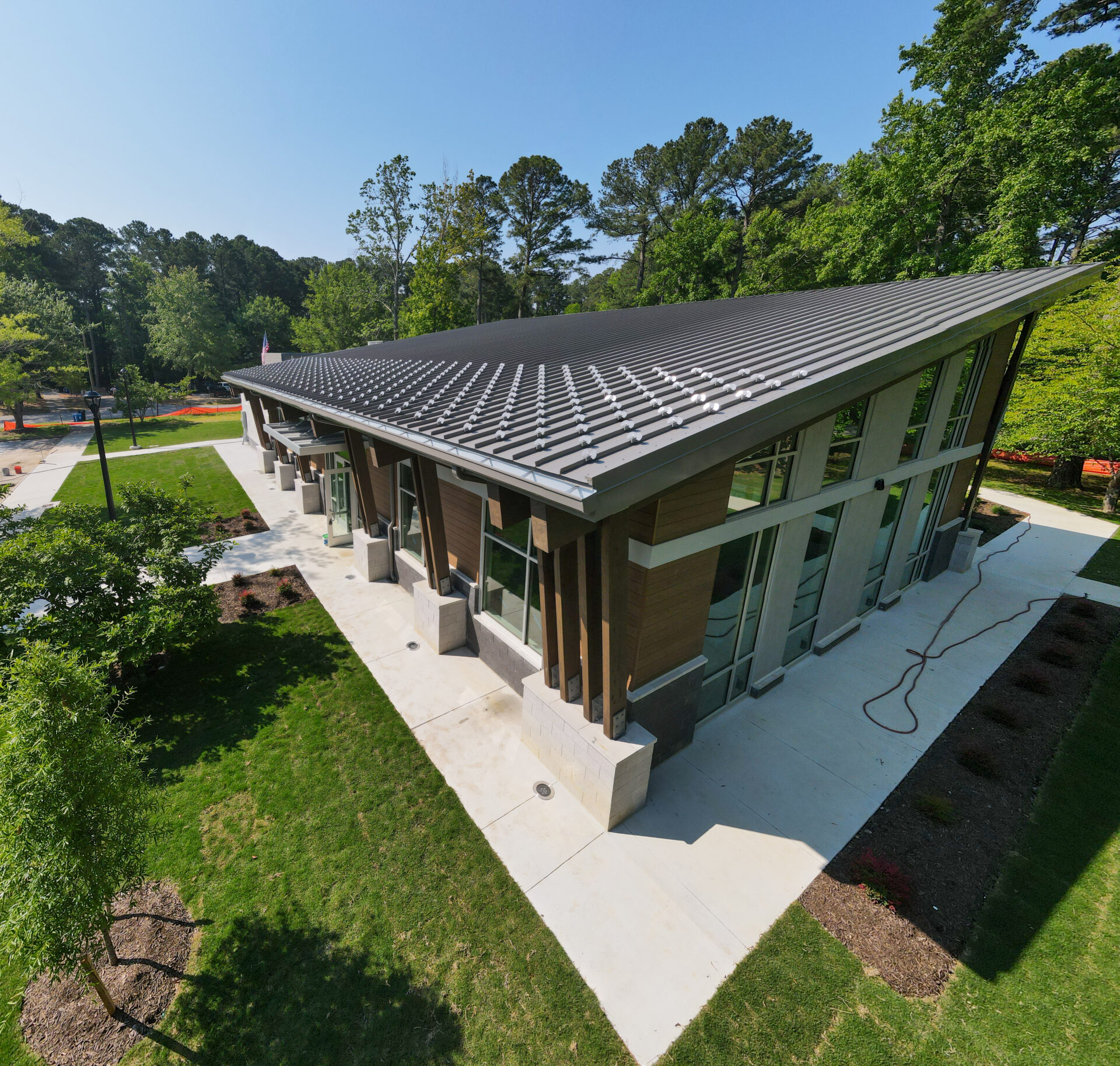
Schedule A Roof Inspection
Call 757-210-6580 or fill out our form
Licensed & Insured Class A Contractor
Hours & Address
Hours
MONDAY – SUNDAY
7:00am – 6:00pm
